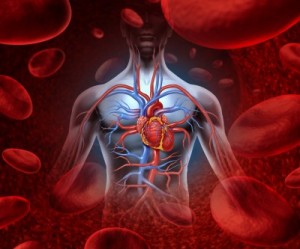Hypotension Protocol
 Please see Hypotension Cause for the Model for this protocol.
Please see Hypotension Cause for the Model for this protocol.
- Level‑1 / LiveO2 — Oxygen Multistep Therapy
- Level 2 / Level‑1 + Oxygen Nutrients
- Level 3 / Level‑2 + Vasoregulator Nutrients
- Level 4 / Level 3 + Vasoregulator Nutrients
Protocol Model
Since the several models of hypotension reflect chronic stress effects, hypotension is usually a prolonged stress response pattern when the body loses the ability to maintain tension in the arteries to control blood flow.
Many texts describe this as a sympathetic response is inhibited or parasympathetic activation is elevated, or both. Stress compensation performance reflects collateral performance in body systems. This model considers the stress a result of insufficient oxygen delivery — and a cause of various distress including headaches, called migraines, and degeneration.
- Systemic and local oxygen delivery performance
- Stress tolerance cofactors (neutralization & elimination)
Oxygen performance is a result of several factors (von Ardenne):
- Adaptive delivery to demand variant tissues;
- Unimpeded blood flow to vascularized tissue;
- Plasma saturation for delivery to non-vascularized tissue;
- Available reserves of oxygen delivery nutrient substrates;
Stress Tolerance Cofactors
- Availability of Group 6 Chalcogen Nutrients Sulfur & Selenium / (Revici)
- Oxygen Transport Cofactors, including B Vitamins & Oxygenic Minerals, Mg
- Vascular Tone Modulators, n‑Butyl & glycerol
The goal of this protocol is to optimize support of underlying compensation systems. There are several functional methods:
- Optimize oxygen availability to regulatory structures / Hypotension (Requires strong heart)
- Nutrients that support Oxygen Transport
- Detoxification of agents which inhibit oxygen transport (Primary and Secondary)
- Optimize oxygen availability to vascular structures / 36h
- Supplement Nutrients that support Vascular Tone
Level 1 / LiveO2 — Oxygen Multistep Therapy
Please see our LiveO2 protocol support page for more information.
This protocol supports hypotension which results from:
- Systemic hypoxia — blood pressure is low because the whole body lacks oxygen and the vascular system does not constrict;
- Endothelial Dysfunction — where oxygen delivery to parts of the body which control blood pressure is inhibited limited because blood flow is limited by inflammation of the endothelium. (documented by Manfred von Ardenne)
For Hypotension, consider these options:
- If you do not exercise regularly use OMST 36h to build durability;
- After restoring durability use OMST Hypotension;
- User OMST 15 min quick procedure, or OMST Maintenance to maintain optimal vascular performance.
Please visit our product site for OMST systems and nutrients. You will need to join the site to access pricing information.
Level‑2 / Level‑1 + Oxygen Transport Nutrients
This provides concurrent maintenance of primary systems which result in failure to maintain vascular tone:
- Oxygen to brain to support areas that control blood pressure with Oxygen Multistep Therapy and Mitochondria Nutrients;
- Nutrients which aid in transfer of oxygen from blood to tissue;
| Component | Role |
|---|---|
| Vitamin Cofactors for oxygen delivery | |
| Magnesium aids oxygen use by cells and desaturation | |
|
Thiamine (Vitamin B3)
|
Mobilizes bile and activates liver detoxification |
| Vasoregulator aids dilation response. Provides NO substrate for vasoregulation and CN detoxification pathways. |
Level‑3 / Level‑2 + Oxygen Transport Detox Nutrients
Toxins which bind to hemoglobin sites on red blood cells limit oxygen transport.
- Glycated Hemoglobin from chronic elevated glucose reduces oxygen binding sites on blood cells;
- Elevated plasma ureas result from under-performance in the urea cycle, reduces plasma oxygen availability in blood below optimal levels. Elevated ureas decrease oxygen available to non-vascularized tissues by limiting plasma oxygen solubility or plasma oxygen desaturation or both (author). This effect increases hypoxic vulnerability to non-vascularized tissues;
- Cyanide binds hemoglobin receptors reducing oxygen transport.
This can deplete Hydroxocobalamin, B‑12,
which has stronger affinity for CN than hemoglobin. Secondly, elevated CN can deplete deplete Nitrite (arginine alphaketoglutarate) and thiosulfates
substrate reserves.
| Component | Role |
|---|---|
| Improves chloride oxidation of stress toxins. Supplies ionic magnesium and sulfur. Aids elimination Nitrate and Ammonium ureas. | |
| Aids reduction of Ammonium ureas. Aids elimination of toxic lipids which accumulate with prolonged stress. | |
| Aids cellular neutralization of stress toxin antibodies that develop in response to toxic exposure. Can replace oxygen as a metabolite during acute stress because of chemical reactive similarity, hence aid acute stress tolerance when reserves are sufficient. |
Level‑4 / Level‑3 + Vaso-regulator Nutrients
This titration provides a ramped support for vascular cofactors which depend on quantitative dysregulation level.
| Supplement | Purpose |
| Flow E, Flow C | Aid kidneys and fluid distribution Magnesium salts & Glycerin. Support electrolytes to maintain fluid |
| Electrolyte Deficiency | Adds working salts and adrenal agents to improve ionized mineral availability. Important with Betaine-HCL to improve digestion. |
Recommend experiment using Flow EC to manage blood pressure during day. Low BP is likely some combination of hypoxia. Flow C and Flow E tend to push metabolism toward Anabolic and will aid sleep.
- Use BP Cuff to take BP
- Use it to manage Dosage by table below
- And take the following number of droppers
Suggested Usage Table:
|
Systolic BP
|
Droppers of Flow E & C
|
Capsules of Electrolyte Deficiency |
|
< 115
|
1
|
1
|
|
< 110
|
2
|
1
|
|
< 105
|
3
|
2
|
|
< 100
|
3
|
2
|
|
< 95
|
4
|
3
|
Dropper: 1 mL is approximately 1 dropper full or about 10 drops.
